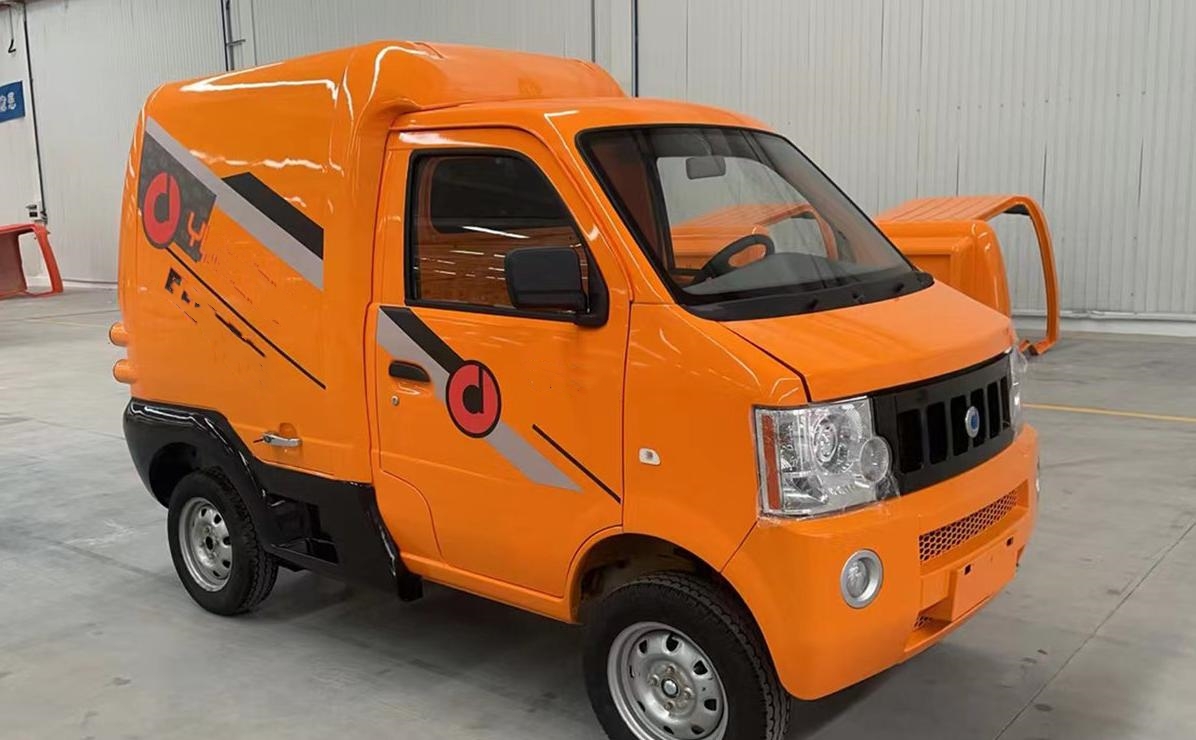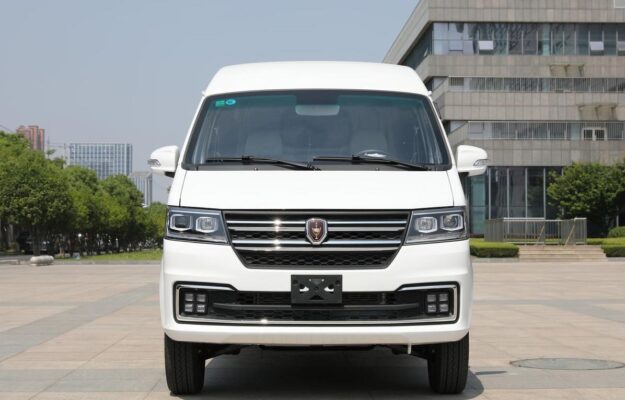Electric Truck Knowledge
Electric Vehicle Drive Motor Materials and Testing
1. Electric Vehicle Drive Motors
1.1 DC Motors
Early electric vehicles (EVs) often used DC motors due to their simple control mechanisms and low cost. The most common types include separately excited DC motors and series-wound DC motors. However, the presence of a commutator and brushes leads to mechanical wear, requiring regular maintenance. These components also contribute to mechanical losses, contact losses, and electrical losses, reducing efficiency. Although DC motors are becoming less common in modern high-performance EVs, they are still used in some models, such as the University of Tokyo’s UOT electric vehicle, Mazda’s BANGO EV, Fiat’s 900E/E2, and China’s Lujun EV.
1.2 Permanent Magnet Brushless Motors
Permanent magnet brushless motors are categorized into two types:
- Permanent Magnet Synchronous Motors (PMSM), which use sinusoidal current.
- Brushless DC Motors (BLDC), which operate with rectangular pulse wave currents.
Both types use permanent magnets in the rotor, eliminating the need for brushes and excitation windings. The commutation process in these motors is handled electronically via stator windings, generating rotational torque.
Key advantages of permanent magnet brushless motors include:
- High reliability
- High power output
- Compact size and lightweight compared to other motors of the same speed
- Easy maintenance
- High efficiency and power factor
As the rotor lacks an excitation winding, it has no copper losses. The low magnetic flux reduces iron losses under light loads, leading to a high power-to-weight ratio and enabling high-speed operation. Además, the absence of rotor wear and the ease of cooling the stator winding contribute to superior dynamic characteristics, high-speed limits, and better braking performance.
However, permanent magnet brushless motors have limited power ranges (typically up to several tens of kilowatts) and can suffer from magnetic degradation under high temperatures, vibrations, and excessive current.
A newer variant, el interior permanent magnet brushless DC motor, embeds magnets within the rotor iron core in a dovetail-shaped slot. This design combines features of brushless DC motors and series-wound DC motors. By adjusting the advanced conduction angle, these motors can achieve constant power operation and optimized efficiency.
Popular EV models using permanent magnet synchronous motors (PMSMs) include:
- Toyota Prius
- Honda Civic Hybrid
- Nissan Altra
- China’s FAW and Dongfeng hybrid cars
- Tongji University fuel cell vehicle
- BYD E6
Except for Tesla, most mainstream EVs and hybrid vehicles use rare-earth permanent magnet synchronous motors, which represent the preferred choice among automakers.
1.3 Switched Reluctance Motors (SRM)
Switched reluctance motors have been explored for EV applications since the 1980s. Unlike conventional AC motors, SRMs have a double-salient structure and contain only concentrated excitation windings on the stator, with no windings or permanent magnets on the rotor.
SRM advantages:
- Simple and rugged structure
- High reliability
- Lightweight and easy maintenance
- Low cost
- High efficiency (85%–93%)
- High-speed capability (above 15,000 rpm)
However, SRMs face challenges with torque ripple and noise, limiting their widespread use in EVs.
2. Motor Components and Materials
2.1 Core Material – Silicon Steel
Electrical steel sheets, particularly non-oriented silicon steel, are key materials for drive motors, influencing performance and durability.
EV motor steel requirements:
- High magnetic flux density for better startup torque
- Low iron loss at high frequency to improve energy efficiency
- High strength, especially for permanent magnet motors, as embedded magnets require strong rotors
- Thin laminations to minimize rotor-stator air gap and improve magnetic flux density
- High fatigue life, as motor steel must balance magnetic performance with structural strength
High-strength electrical steel for EV motors needs to be 200 MPa stronger than traditional non-oriented electrical steel. Strengthening is achieved via substitutional solid solution and precipitation hardening, rather than conventional methods like phase transformation or dislocation strengthening.
Japan leads in industrial production of high-strength non-oriented silicon steel, while China is still developing this capability. Companies like Wuhan Iron and Steel Corporation (WISCO) are conducting industrial trials, and the Chinese Academy of Iron and Steel Research is experimenting with continuous casting and rolling processes.
2.2 Permanent Magnet Materials
Permanent magnet motors rely on materials with:
- High coercivity for maintaining strong magnetic force
- High residual magnetization for better speed and torque
- High intrinsic coercivity for resistance to demagnetization, aging, and low temperatures
- High magnetic energy product for efficient performance
The growing demand for neodymium-iron-boron (NdFeB) permanent magnets in automotive motors highlights their strategic importance. Each EV motor typically requires over 3 kg of permanent magnet material.
2.2.1 Ferrite Magnets
Commonly used non-metallic permanent magnets include:
- Barium ferrite (BaO·6Fe₂O₃), discovered in 1962
- Strontium ferrite (SrO·Fe₂O₃), discovered in 1965
Strontium ferrite has slightly higher coercivity (Hc) and is preferred in motor applications.
Advantages:
- Low cost
- No rare earth elements
- Lightweight (4.6–5.1 g/cm³)
- Stable demagnetization curve
Disadvantages:
- Low remanence (0.2–0.44T)
- Limited magnetic energy product (BH max = 6.4–40 kJ/m³)
- Poor resistance to temperature variations
- Brittle structure
2.2.2 Alnico Magnets
Alnico magnets (Al-Ni-Co) feature high residual flux density (Br) but low coercivity (Hc). They are prone to demagnetization and require cylindrical or rod-shaped designs to minimize losses.
2.2.3 Samarium-Cobalt (SmCo) Magnets
Developed in the 1960s, SmCo magnets offer excellent magnetic properties, with:
- Br = 0.85–1.14T
- Hc = 480–800 kA/m
- Magnetic energy product (BH max) = 120–210 kJ/m³
- High temperature stability and demagnetization resistance
Due to their high cost, SmCo magnets are used in high-performance applications where reliability is critical.
2.2.4 Neodymium-Iron-Boron (NdFeB) Magnets
Discovered in 1983, NdFeB magnets have:
- Highest energy product (up to 400 kJ/m³, 12x ferrite, 8x Alnico, 2x SmCo)
- High Br and Hc
- Abundant raw materials (neodymium is ~10x more common than samarium)
Drawbacks:
- Low Curie temperature (310–410°C)
- High temperature sensitivity
- Prone to corrosion
As China controls over 80% of global neodymium resources, NdFeB magnets offer a cost-effective solution, supporting the industrialization of brushless DC motors.
3. Motor Material Testing
3.1 Silicon Steel Testing
Key magnetic properties tested include:
- Iron loss
- Magnetic induction strength
Standards used:
- GB/T 13789 (Single-sheet electrical steel testing)
- GB/T 3655 (Electrical steel magnetic, electrical, and physical property testing)


